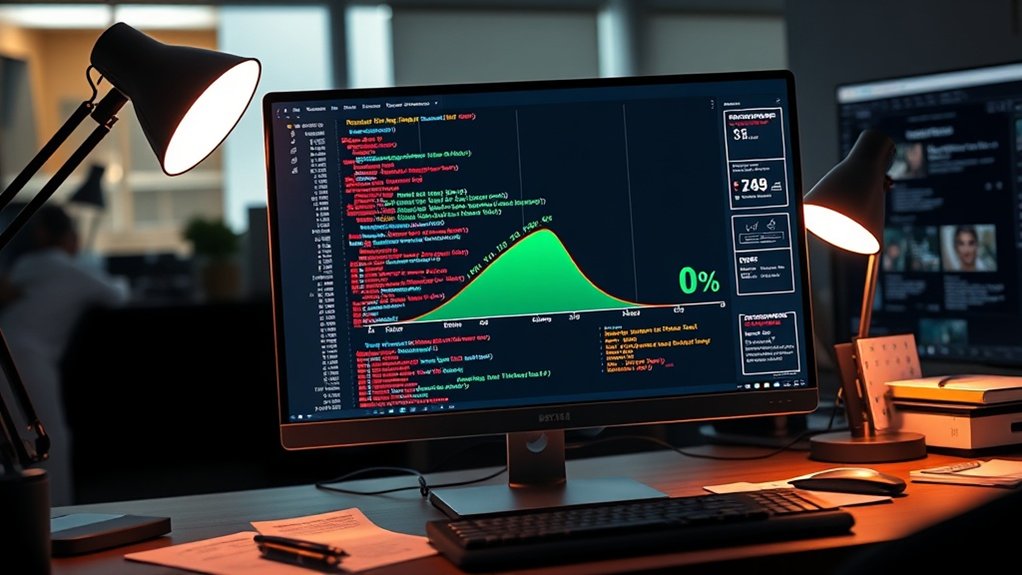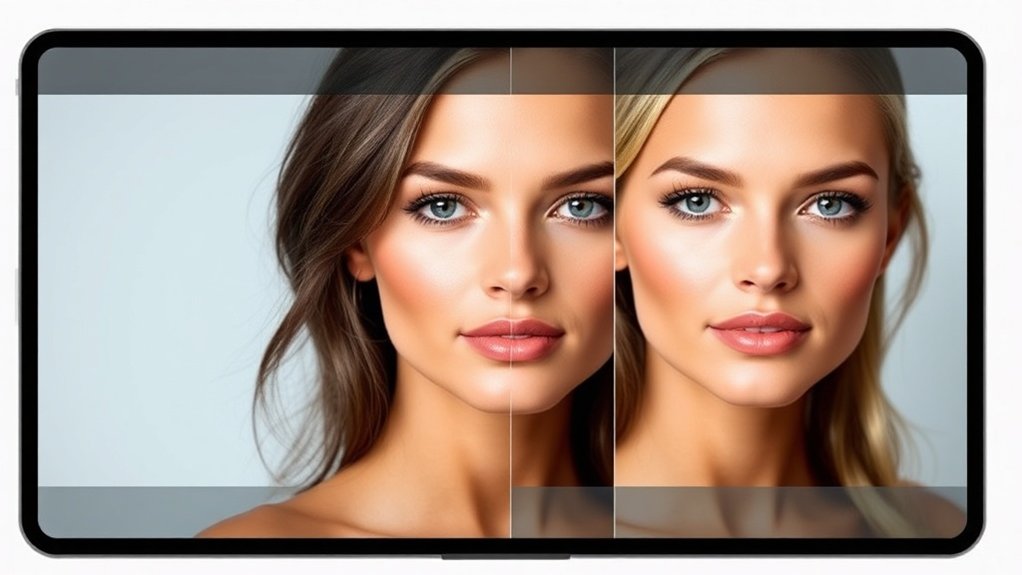Your plastic surgery website’s page speed requires targeting Core Web Essentials: LCP under 2.5 seconds, FID below 100 milliseconds, and CLS under 0.1. You’ll need to compress before-and-after images using WebP format for 30% file size reduction, implement CDN distribution to decrease latency, and defer render-blocking JavaScript that delays interactivity. Since 53% of mobile users abandon sites exceeding 3-second load times, optimizing your 2MB+ medical galleries becomes critical for patient acquisition. The advanced strategies below reveal how to achieve these benchmarks systematically.
Understanding Core Web Vitals and Performance Benchmarks for Medical Websites

Performance metrics directly determine your plastic surgery website’s search visibility and patient acquisition rate.
Core Web Essentials measure three critical aspects of website performance: Largest Contentful Paint (LCP) for loading speed, First Input Delay (FID) for interactivity, and Cumulative Layout Shift (CLS) for visual stability.
Your medical websites must achieve LCP under 2.5 seconds, FID below 100 milliseconds, and CLS under 0.1 to meet Google’s benchmarks.
Poor page speed creates measurable consequences—each 1-second delay reduces conversions by 7%. Meeting these thresholds improves search rankings and patient engagement rates.
Use Google PageSpeed Insights to analyze your current user experience metrics and identify optimization opportunities.
These performance indicators aren’t optional; they’re competitive differentiators that determine whether potential patients find your practice online.
Technical Strategies to Improve Largest Contentful Paint (LCP) Scores
When potential patients abandon your plastic surgery website within seconds, you’re losing qualified leads to competitors with faster-loading pages.
Page Speed Optimization directly impacts your Largest Contentful Paint metrics, which must stay under 2.5 seconds for ideal technical SEO performance. To boost LCP scores, optimize images using WebP formats and compression algorithms that reduce file sizes by 60-80%.
Implementing a Content Delivery Network distributes your content across multiple servers, decreasing latency for geographically dispersed users.
Eliminate render-blocking resources by deferring non-critical JavaScript and CSS files.
Monitor website performance continuously through Google PageSpeed Insights and Lighthouse, tracking LCP improvements against industry benchmarks.
These technical strategies improve user experience while boosting search rankings, converting more visitors into consultation bookings for your practice.
Reducing First Input Delay (FID) Through JavaScript and Code Management

JavaScript execution delays cost plastic surgery practices thousands in lost consultation bookings as bloated code blocks the main thread for 300+ milliseconds beyond Google’s 100ms FID threshold. You’ll achieve peak site responsiveness by implementing code splitting, which delivers only essential JavaScript for initial interactions. Improve JavaScript through asynchronous loading of third-party scripts, preventing main thread blocking that degrades user experience.
| Optimization Technique | FID Impact | Implementation Priority |
|---|---|---|
| Defer non-critical JS | -150ms | High |
| Code splitting | -200ms | Critical |
| Async third-party scripts | -100ms | High |
| Minimize parser-blocking | -175ms | Medium |
Monitor reducing first input delay using performance tools like Lighthouse to maintain competitive search rankings. Continuous monitoring FID confirms sustained user experience improvements and conversion improvement.
Eliminating Cumulative Layout Shift (CLS) Issues on Plastic Surgery Sites
Unstable layouts that shift during page load destroy conversion pathways for plastic surgery websites, with CLS scores above 0.1 triggering Google ranking penalties and causing 23% higher bounce rates.
Eliminating CLS issues requires precise website optimization through dimension specification for all images and videos, preventing unexpected shifts in visual stability.
You’ll need CSS-defined element sizing to maintain structural integrity during page load time.
Implementing lazy loading reduces initial resource consumption while preserving layout consistency as users scroll through before-and-after galleries.
Google PageSpeed Insights provides critical CLS diagnostics for your plastic surgery websites.
Target scores below 0.1 to satisfy Google Core Web essential requirements and maximize user experience.
Regular testing identifies layout shift patterns, enabling technical remediation that improves conversion rates and patient engagement metrics across your digital presence.
Advanced Image Optimization for Before-and-After Galleries and Medical Photography

Because medical photography represents the primary conversion driver for plastic surgery websites, boosting before-and-after galleries for speed while maintaining diagnostic-quality visual fidelity requires specialized technical approaches beyond standard image compression.
Critical Advanced Image Improvement Strategies:
- Format Selection & Compression: Use WebP format to achieve 30% file size reduction while compressing images using TinyPNG for up to 80% additional savings without compromising medical photography quality standards.
- Responsive Images Implementation: Configure srcset attributes to serve device-appropriate resolutions, confirming peak image performance across all viewports while maintaining before-and-after galleries’ clinical accuracy.
- Lazy Loading Integration: Implement lazy loading to defer off-screen image rendering, dramatically improving initial page speed increasement metrics.
Regularly audit performance through Google PageSpeed Insights to identify bottlenecks and maintain superior user experience while protecting your site’s conversion-critical visual assets.

